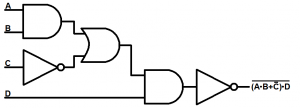As1100 Drawing Standards

Lines:
There are a number of different lines that you will be required to use in Technical Drawing. The table below shows you the different lines, describes where they are used and give you an example of each line.
AS1100.101- 1992 Australian Standard Technical Drawing. These resources are either available for free online through the RMIT Library or will be provided. Standard sized sheets as stated in AS1100. There are several drawing standards available both nationally and internationally. AS1100 covers structural engineering drawings and this includes a section view arrow callout that uses the section number in the top of a balloon and the drawing sheet number in the lower half as shown in the figure below: Currently the only way to achieve this in a drawing is via a combination of. AS 1100.301-2008 AMDT 1. Technical drawing-Architectural drawing. AS 1100.301-2008 REC:2018. Technical drawing, Part 301: Architectural drawing. AS 1100.401-1984. Technical drawing, Part 401: Engineering survey and engineering survey design drawing.
| Type of Line: | Use of line in Technical Drawing: | Example of lines: |
| Type A - Continuous, Thick | Visible outlines of the drawing. | |
| Type B - Continuous, Thin | Dimension and projection lines, leaders. Hatching on sections. | |
| Type C - Continuous, Thin (freehand) | Break in the object . | |
| Type D - Continuous, Thin (ruled with zig-zag) | Break in the object (Straight) | |
| Type E - Dashed, Thick | Hidden edges. | |
| Type G - Chain, Thin | Center Lines of circles, arcs and center of objects. | |
| Type H - Chain, Thick at each end and thin in the middle. | Cutting plane in sectioning of objects. |
Where two or more lines of different type coincide, the following order of priority should be observed:
(a) Visible outlines and edges. (b) Hidden outlines and edges. (c) Cutting planes. (d) Centre-lines. (e) Projection lines. |

Selection of views shall be selected according to the following principles:
(a) To reduce the number of views required to fully delineate the information to be specified.
(b) To avoid the need for hidden outlines.
Drawing Presentation Guidelines | Main Roads Western Australia
(c) To avoid unnecessary repetition of detail.
Sectioned views:
Sectioning is used to show internal detail or to reduce the use of hidden detail lines that may make the object difficult to recognise. All hidden outlines in the section should be omitted except in special cases.
These types of drawings are Orthogonal's with imaginary lines cutting the object into parts.
Each sectional view or section shall be identified with its appropriate cutting plane, where identified, by inscribing a subtitle below the view or section; e.g. ‘SECTION A-A’, ‘SECTION B-B’.
Cutting planes are to shown using a 'Type H' line with the direction of viewing show by an arrowhead and a letter placed at the tail of the arrow. The cutting plane should pass through the main part of the object.
Hatching:
The cut part of the object is to be shown using with a hatched line (usually at 45°, unless this would make the object more difficult to understand). Where two or more adjacent parts have been sectioned the hatch line should be at different angles.

Angle of Hatching | Sectioning of Adjacent components |
See Full List On Mainroads.wa.gov.au
Technical Drawing, Part 101: General ...
Breaks:
See Full List On Standards.org.au
Break maybe used to shorten lone objects and will use Type C or Type D lines.
Symbols:
The following symbols are to be used in dimensioning:
| Symbol: | Use: |
| Diameter symbol, this is used to indicate the diameter of a circle. | |
| R | Radius Symbol, this is used to indicate the radius of a circle or arc. |
| This symbol is used to refer to the object being identified is square and the same size across all surfaces. |
Dimensioning, Projection and Leader Lines:
Objects that are drawn in Graphics often need to have dimensions showing the size and angles used to show detail about the component. Dimensions show the length and angle of items and the drawing should include only the measurements require to describe the object.
Projection lines are lines that extend from the object and extend outside the outline of the drawing where possible. These lines should start and extend past the dimension line.
Year 08 Technology Mandatory > Graphics > Technical drawing standards - AS 1100posted 5 Sept 2013, 20:06 by scott.llamas@syd.catholic.edu.au [ updated 5 Sept 2013, 20:11]
|